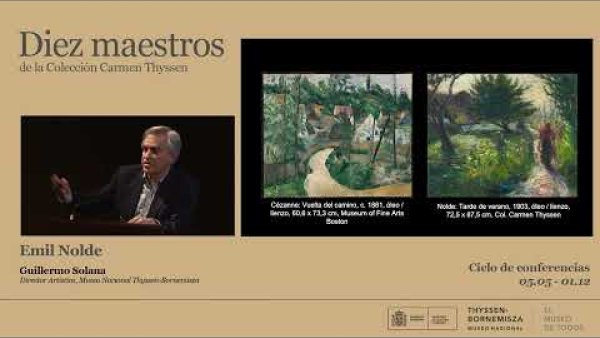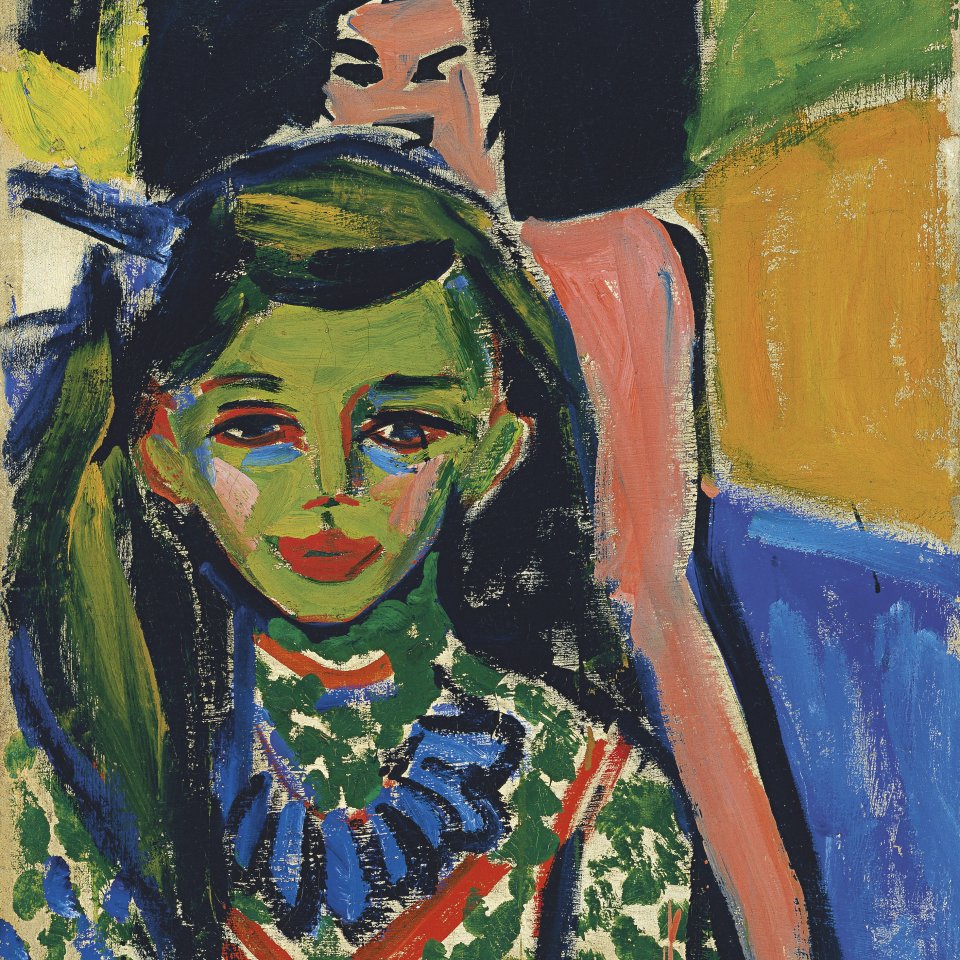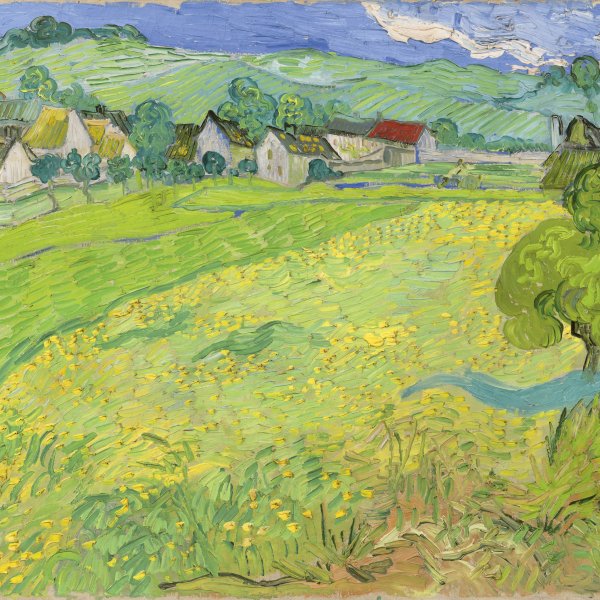Summer Afternoon
Summer Afternoon is one of the most beautiful and important paintings executed by Nolde in 1903, in a crucial period of his artistic career. In 1902 he had decided to change his family name, Hansen, for that to his native town, Nolde, a rural village in Schlesswig-Holstein, near the frontier with Denmark. That same year he had married Ada Vilstrup. Before the end of the year, his mother died. Nolde, who had grown up in a family of peasants, wished to live again in the country; Ada's fragile health gave him the excuse he needed. In May 1903 he settled in Notmarskov, on the island of Alsen; at the beginning of the autumn he rented a fisherman's cottage in Guderup on the south of the island. The Noldes stayed there until the spring of the following year. Upon their arrival in Guderup they received a visit from Hans Fehr and his wife; in the previous months Fehr, a young university teacher, had become a client and friend of Nolde's.
Their sojourn in Guderup, in contact with the local community of fishermen and peasants, was for Nolde one of the happiest times of his life. His isolation in the rural environment of Alsen favoured the crystallisation of his pictorial language. While his first paintings reveal his "northern" affiliation and the late-romantic aspirations that the painter shared with many Baltic and German writers and artists of the turn of the century, his continuous travels, undertaken from 1898 onward (Munich, Amsterdam, Paris, Berlin, Copenhagen) enabled him to get to know French Impressionism and post-Impressionism, as well as other similar European trends. In the paintings Nolde executed in Alsen, the symbolist inspiration was to yield (but not entirely disappear) to empirical and visual accuracy. His palette became lighter, richer and better modulated, acquiring the emotional intensity that characterised his oeuvre throughout his life. The figure of the girl seen from behind against the light in Summer Afternoon still recalls the late-romantic style that Nolde used in his paintings in the first years of the century; but the brown hues, the suffused greens and the blacks have disappeared and been replaced with bright colours. Nevertheless, colour is not, as it had been for the Impressionists, primarily an optical stimulus; it tries to be the expression of a state of mind, of the exaltation of feelings.
For many years, Summer Afternoon belonged to the artist. It is mentioned in several passages of his memoirs. Thus, we can read this reminiscence in Nolde (1976): "The summer months flew by as if in a dream: painting and in the company of our friends. They [the Fehrs] took with them my "fisherman", the first picture to be hung in their young teachers' home. The painting in which Ane is pushing a barrow remained with us and the flowers that my Ada had planted along the path are still in bloom in the painting".
Ane, a Danish girl from the island of Alsen, the young woman we see from behind pushing a barrow in Summer Afternoon, was the domestic at the Nolde's. "She was in her most tender and beautiful age", wrote Nolde. "My Ada, amazed by her natural beauty, insisted on my contemplating and admiring her; and there she was, as if born from the earth, as the purest and most gorgeous and flourishing fortune. She was only a child [...]. She, that candid daughter of the earth, has probably been the most beautiful and bare expression of real femininity I have ever seen. A rough sailor turned up and fell on the girl's blossoming breast. We never saw her or heard of her again".
Tomàs Llorens














